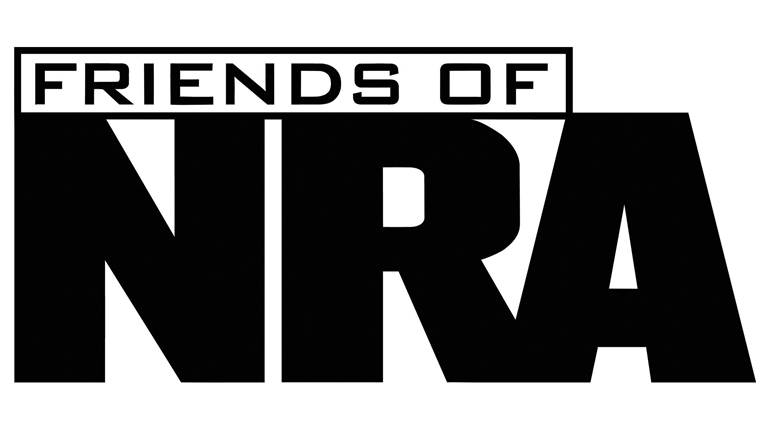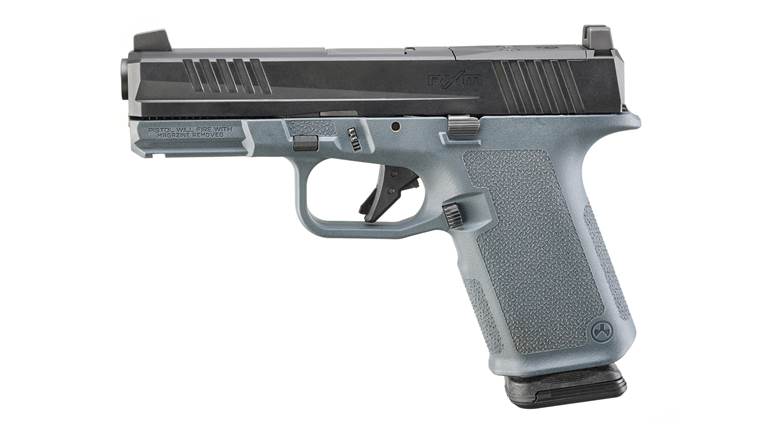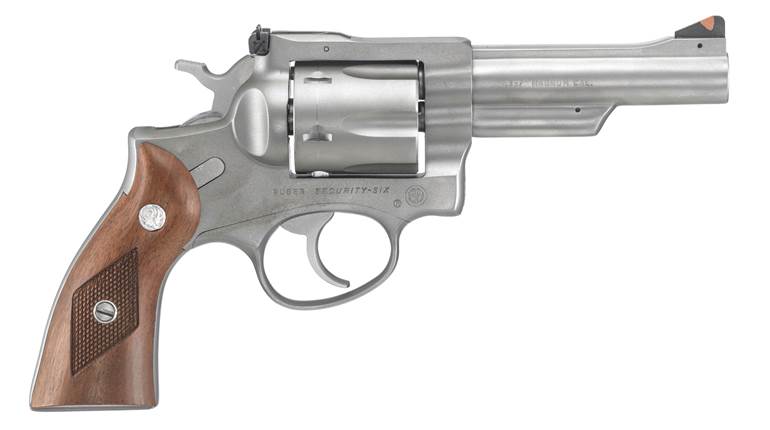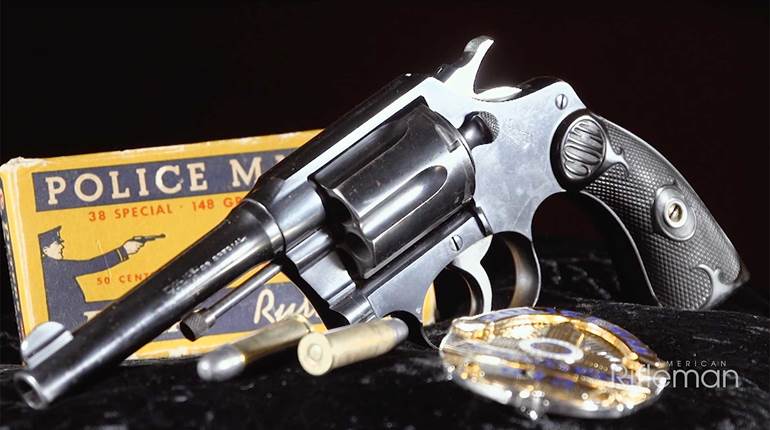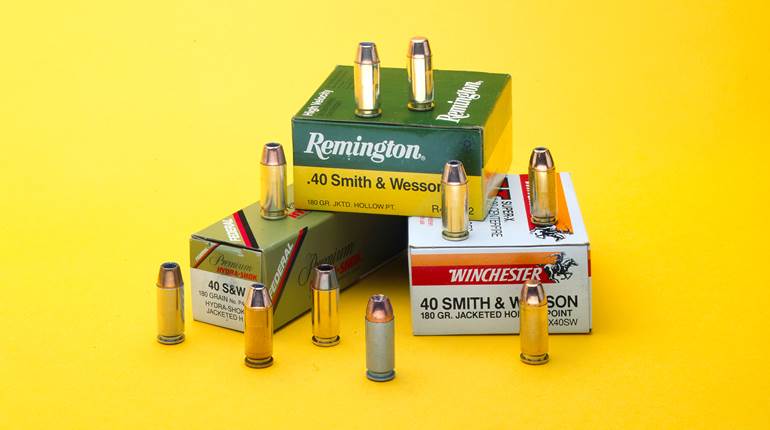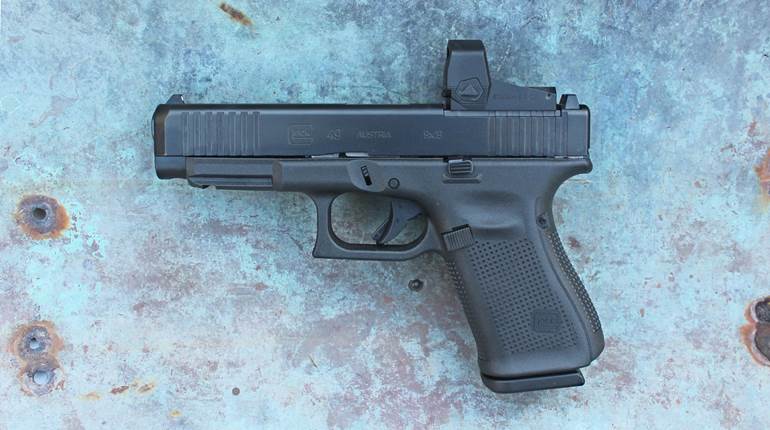
James Martin Triggs (his friends called him Jim) was an illustrator and artist, but those terms barely capture the level of talent he brought to his work. Throughout his career, his accurate and skillful drawings of mechanical goods elevated multiple industries, though he is probably most remembered for his contributions to the firearm industry, and, in particular, for his drawings of Ruger firearms. In an age when most everything is done on a computer screen or with the help of graphic software, Triggs’ work provides a glimpse into a lost age of commercial artistry that still draws the eye and enthralls the mind.

Jim Triggs was captivated by anything mechanical. During elementary school, he discovered he possessed a talent for drawing. After graduating high school, he chose to advance his artistic talents by attending a Brooklyn art school and later working (while still learning) in the advertising trade. In particular, he was fascinated with firearms and what made them work. He was intrigued by the number of mechanical events that had to take place in a semi-automatic firearm to fire, extract, eject, reload, re-cock and be ready to fire the next round in the matter of a split second. One can see his devotion in the details of his exploded drawings. Besides his family, Jim had three loves—airplanes, guns and the history of the Old West—although not necessarily in that order. Many of his paintings reflect those interests.
Triggs was born March 2, 1924, in Glen Ellyn, Ill., to Lawrence and Florence Srout Triggs. He attended Mamaroneck High School in Mamaroneck, N.Y. Jim recalled an early introduction to firearms, “As a boy, I worked as a part-time soda clerk to earn money to go to a boy’s camp in Colorado. I entered a small-bore rifle course sponsored by the NRA while attending camp. It was there my shooting skills were honed to the point of winning several shooting medals.”
After high school, Jim spent two years at Cornell University, College of Architecture, located in Ithaca, N.Y. After graduating from Cornell, he spent two more years at the Pratt Institute Art School, in Brooklyn, N.Y., majoring in advertising design and illustration. During his college years, Triggs worked in various jobs, including as a parking lot attendant, doorman, Saturday Evening Post salesman and as a saxophone player in an Ithaca, N.Y., saloon.
 Triggs’ military career included service in the U.S. Army Air Corps, followed by two years in the New York State Guard. During this period, he was introduced to one of his lifelong interests: the machine gun. Jim had an infatuation with machine guns, airplanes and about anything to do with the Old West, which included cowboys, Indians, guns and trains.
Triggs’ military career included service in the U.S. Army Air Corps, followed by two years in the New York State Guard. During this period, he was introduced to one of his lifelong interests: the machine gun. Jim had an infatuation with machine guns, airplanes and about anything to do with the Old West, which included cowboys, Indians, guns and trains.
In the mid-1940s, Jim was employed in the aviation industry. This included work at the Republic Aviation Corp., Liberty Aircraft Products Co., Edo Aircraft Corp. and American Airlines, Inc.—all companies in the state of New York. At Republic, Liberty and Edo, Triggs participated in graphic production illustration programs and prepared layout production programs for the construction of airframe components. At American, he worked as an airplane overhaul mechanic.
After his time in the aviation field, Triggs accepted a position with Charles E. Cooper, Inc., a general commercial art studio, as an art apprentice. Due to the experience gained at Cooper, he was then offered a job as staff artist for advertising at Sports Afield Publishing Co., Inc. At Sports Afield, he designed and produced sales promotion materials for trade show displays. Triggs later moved to Roy Germanotta, Inc., as staff illustrator with general freelance assignments in advertising art and product illustration in 1948.
Triggs enjoyed working with his hands, restoring old guns, constructing model airplanes and building miniatures, so he took a job at Lester Associates in 1951 where he worked as a model maker, designer and draftsman. He participated in the design and fabrication of detailed scale models for the U.S. Navy and various industrial customers. His duties included general machine work, operation of lathes, milling machines and shapers, as well as working in the wood shop.
 Next, Triggs relocated to New York City in 1953 where he joined the firm of Fenga & Donderi, Inc., as a staff illustrator. There he worked on the layout and design of brochures, annual reports, advertising and sales promotion materials, as well as lettering and photo-retouching.
Next, Triggs relocated to New York City in 1953 where he joined the firm of Fenga & Donderi, Inc., as a staff illustrator. There he worked on the layout and design of brochures, annual reports, advertising and sales promotion materials, as well as lettering and photo-retouching.
After seven years at F&D, Triggs struck out on his own as a self-employed freelance illustrator and writer. His work during the following 15 years was increasingly more specialized in the aviation and firearm fields, divided between design, illustration and writing assignments. Writings in the aviation field included technical articles for Air Progress Magazine and two books in the Modern Aircraft series published by Sports Car Press.
Writings in the firearm field included numerous articles for American Rifleman, Gun Digest, Adventure, Railroad, Guns, Guns Annual, Guns & Ammo and Arms Gazette, just to mention a few. In many of these publications, Triggs’ art graced the covers and went along with his drawings and illustrations to enhance his articles. Triggs’ art was featured on the covers of 15 Gun Digests, beginning in 1958 and ending in 1989. He was capable not only of illustrating modern guns, like the then-new Smith & Wesson Model 41, which was featured on the 1958 cover of Gun Digest. He also illustrated classic arms, such as the Volcanic pistol shown on Gun Digest’s 1960 cover, and Winchester rifles, which were illustrated on the 1967 cover. Triggs’ last Gun Digest cover highlighted Ruger’s new GP100 and SP101 revolvers. His “Exploded Views,” featured in American Rifleman and other various firearm publications, set the standard in that type of illustration.

In addition to work in aviation and firearm publications, Jim provided general technical writing and advertising/sales promotion copy for a number of industrial accounts, as well as copy for many, many advertising agencies over the years, most of which would probably be recognizable to advertising industry professionals today. Just to scratch the surface, Triggs’ industrial accounts during that time included: Shell Oil Co.; General Dynamics; General Electric; IBM; Smith & Wesson; Colt; Sturm, Ruger & Co.; and Marlin Firearms.
Triggs’ first job for Ruger came in 1958. It was for a parts and cutaway drawing of the new Ruger Bearcat revolver, which was followed by various other contract assignments. In 1976, Triggs was hired as advertising and executive art director and head of the Hawkeye Communications Division of Sturm, Ruger & Co., an in-house advertising agency where he was engaged in the design, writing and production of all Ruger print advertising and sales promotion materials for domestic, military and export markets. He was also responsible for handling domestic sales correspondence, public relations and contact with editors and writers of national firearm and outdoor publications. He held this position for the next 12 years.
During that time, Bill Ruger, Sr., and Jim Triggs became close friends. They were drawn together through mutual respect and an admiration for the accomplishments achieved by the other. Just about every Sunday morning, provided both men were in town, Jim could be found drinking coffee with Bill at the latter’s kitchen table. The two would discuss everything from current work projects and current events to model trains and antique cars. Mr. Ruger was the subject of several of Triggs’ paintings, and three of Triggs’ paintings were prominently displayed on the walls of Ruger’s home alongside those by such artists as Fredric Remington and Carl Rungius.

In the 1970s, due to failing health, Triggs opened a small studio in his home where he continued some contract work for Ruger along with an occasional painting. Toward the end of his life, even when he was bedridden and incapable of producing much work, Ruger kept him on the company payroll, ensuring that he still had health insurance.
 Triggs was invited to join the Society of American Historical Artists (SAHA) in 1981. At the premier SAHA show in 1982, he was presented the Remington Arms Co. Award for the best portrayal of a historical firearm and an Art West Magazine Merit award. At the second annual SAHA show in 1983, Triggs again won the Remington Award for his paintings. Jim was considered to be one of the best trompe l’oeil (fool the eye) painters, ever. He was elevated to the office of secretary of SAHA in 1983.
Triggs was invited to join the Society of American Historical Artists (SAHA) in 1981. At the premier SAHA show in 1982, he was presented the Remington Arms Co. Award for the best portrayal of a historical firearm and an Art West Magazine Merit award. At the second annual SAHA show in 1983, Triggs again won the Remington Award for his paintings. Jim was considered to be one of the best trompe l’oeil (fool the eye) painters, ever. He was elevated to the office of secretary of SAHA in 1983.
In his personal life, and in earlier days before his health began to decline, Jim was a volunteer fireman with the Larchmont Fire Dept., where he reached the rank of captain. He married Mimi Jennewein on July 7, 1972. She was the daughter of renowned Italian portrait painter and sculptor Paul Jennewein.
James M. Triggs lost his long struggle with emphysema on June 26, 1992. He left behind his wife, Mimi, three sons, a stepson, a stepdaughter and brother. He was 68 years old, and he accomplished much in that time.
Jim was a friend and a gentleman, and the world was a better place with him in it. As an illustrator, there was none better. All who knew him miss him.













